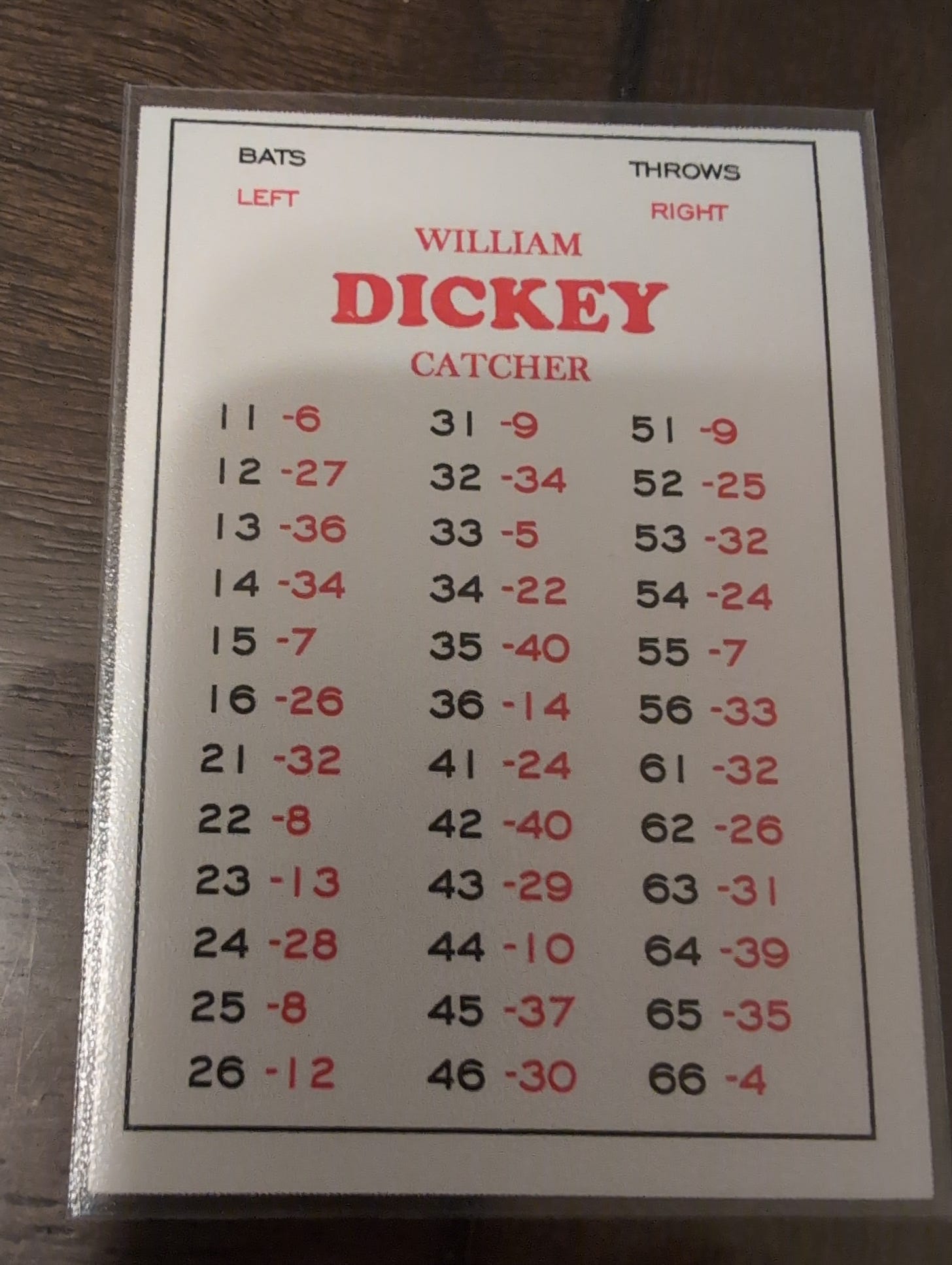The J. Richard Seitz National Pastime Homebrew Cards
An important part of APBA pre-history
The J. Richard Seitz National Pastime Homebrew Cards
I recently received an incomplete scanned copy of 40 different National Pastime cards that were apparently originally created by J. Richard Seitz.
Seitz, as most of you know, created APBA — the more famous game that was based directly on Clifford Van Beek’s National Pastime.
Unfortunately, the scans I have are incomplete. Seitz created a card for himself, for example, that I don’t have a scan of. He also apparently created a card for God that had nothing but 1s (home runs in all base situations) for every dice roll.
I think these scans are of reprints of these cards and not of the originals. Some of the National Pastime reprints that were sold around 20 years ago included full copies of all the Seitz homebrew cards, though the one I own sadly does not.
Ignoring the juvenile antics, there are two Seitz cards in particular that I consider fascinating because they are actually corrections of National Pastime player cards.
One is for Richard Ferrell, a catcher for the St. Louis Browns. Here is the Seitz version:
And here is the original:
A quick glance will show that the differences here aren’t great:
22: 7 changed to 5
31: 18 changed to 8
33: 7 changed to 5
35: 36 changed to 40
36: 33 changed to 14
51: 20 changed to 10
In my opinion, Seitz goes too far with these changes. Ferrell only had a single home run in 1930; changing two 7s to two 5s gives him 8 expected home runs, by my calculations. Changing that 20 to a 10 also gives him an outside chance at a stolen base (my spreadsheet says 3 expected stolen bases) and completely removes the error numbers from his card.
Overall, Ferrell’s expected batting average with his adjusted card increases to .333. The expected average of the original card is .258, which compares much more favorably to his .268 batting average in 1930.
But, then again, perhaps Seitz was hoping to upgrade the card to reflect Ferrell’s career development:
Ferrell went from being a quiet youngster to a perennial all star. It’s possible that Seitz might have adjusted the card in hopes of more accurately capturing Ferrell’s 1936 season performance.
Bill Dickey is the other player whose card Seitz changed:
Here’s the original for comparison:
The differences here are:
22: From 8 to 6
32: From 34 to 33
42: From 40 to 14
61: From 32 to 8
64: From 39 to 29
66: From 4 to 1
Again, these changes result in a little bit too much offense. Dickey would likely hit .355 instead of .333 (he hit .339 in 1930). The extra 14 does help, though, as it takes his expected walk total from 11 to 22; he had 21 walks in real life. Dickey would also likely go from 5 home runs to 15 with that 1 on 66; he hit 5 in real life in 1930.
These changes also seem consistent with Dickey’s performance in 1936:
This gives you an idea of the reverence with which Seitz treated Van Beek’s approach, by the way. With these two cards, it seems that the changes were generally pretty minor, and that Seitz was a bit cautious in making any major changes.
We’ll look at the other cards Seitz made in a future post.










It seems evident that Seitz, who made his cards for use in the league that he and his friends were playing during the 1930s, decided that Ferrell and Dickey's power needed improvement as their stats improved -- perhaps more so than the other 1930 players they were still using. (I believe they stopped using cards in their league when the players' major league careers ended, replacing them with the cards Seitz made for post-1930 players.
I'll forward you Seitz's card (and the ones for the rest of his league members) once I find them again.
I have those cards as produced by Eric Naftaly which includes the cards for the members of the A.P.B.A. league but sadly not the one for God lol. SGP also produced a set that look like typewritten cards.